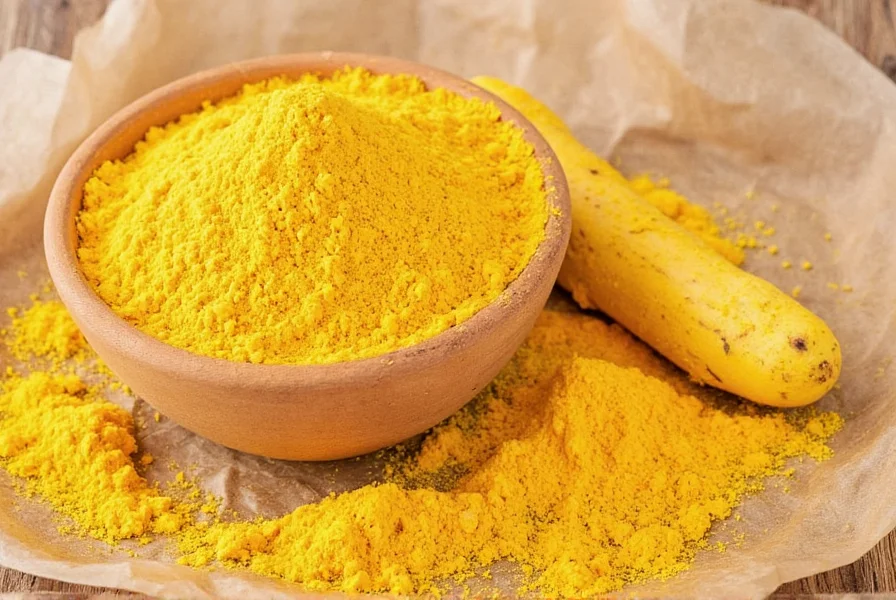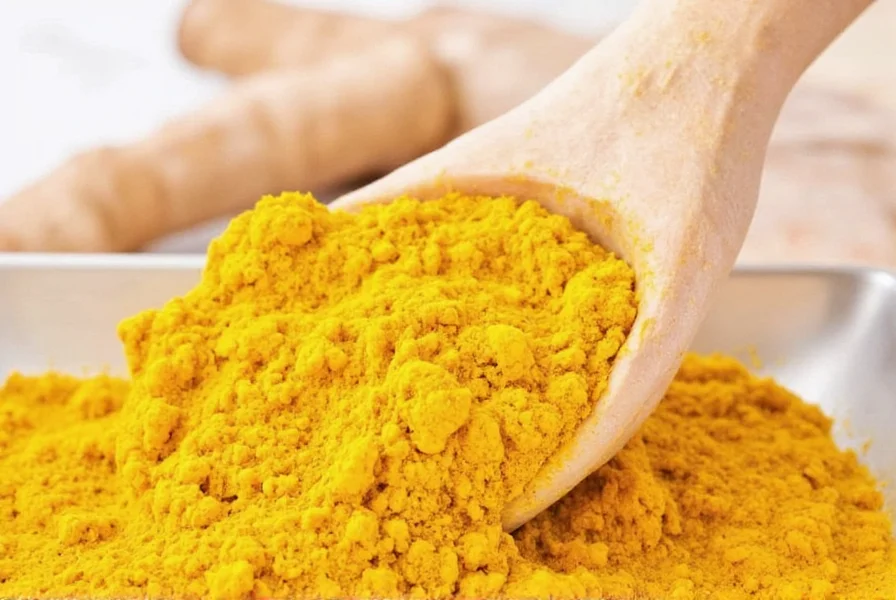Understanding White Turmeric: Beyond the Yellow Spice
While most consumers are familiar with the vibrant yellow turmeric used in curries and health supplements, white turmeric represents a lesser-known but equally valuable botanical cousin. Scientifically classified as Curcuma zedoaria, this rhizome has been utilized for centuries across Southeast Asia and India for both culinary and therapeutic purposes. Unlike its more famous relative Curcuma longa, white turmeric features a pale yellow to white interior when cut open, with a more complex flavor profile that combines citrus, camphor, and ginger notes.

Botanical Characteristics and Origins
Native to tropical regions of India and Indonesia, white turmeric grows as a perennial herb reaching 3-4 feet in height with distinctive purple-tinged leaves and white flowers. The plant's underground rhizomes develop in clusters with a smooth, pale brown exterior that reveals the characteristic white or pale yellow flesh when sliced. Unlike common turmeric which develops a deep orange pigment from curcuminoids, white turmeric contains minimal curcumin but instead features unique compounds like zederone, curzerenone, and furanodiene that contribute to its distinctive properties.
White Turmeric vs. Regular Turmeric: Key Differences
Understanding the distinction between these two related but fundamentally different botanicals is essential for proper usage. The following comparison highlights their most significant differences:
| Characteristic | White Turmeric (Curcuma zedoaria) | Regular Turmeric (Curcuma longa) |
|---|---|---|
| Primary Active Compounds | Zederone, curzerenone, furanodiene | Curcumin, demethoxycurcumin |
| Rhizome Color (Interior) | Pale yellow to white | Bright orange-yellow |
| Flavor Profile | Citrus, camphor, ginger notes | Earthy, slightly bitter, warm |
| Traditional Medicinal Focus | Digestive health, antimicrobial applications | Anti-inflammatory, antioxidant support |
| Common Culinary Uses | Thai salads, Indonesian dishes, pickling | Curries, golden milk, rice dishes |
Traditional Medicinal Applications
White turmeric has occupied a significant place in traditional medical systems across Asia for centuries. In Ayurvedic medicine, practitioners have utilized it as a digestive aid to relieve bloating, gas, and indigestion. Traditional Chinese Medicine incorporates white turmeric (known as E Zhu) for its purported ability to invigorate blood circulation and address menstrual irregularities. Southeast Asian healing traditions have employed it as an antimicrobial agent for wound care and respiratory conditions.
Unlike regular turmeric which gained global popularity primarily for its anti-inflammatory properties, white turmeric's traditional applications focus more on digestive system support and antimicrobial effects. Many traditional preparations involve grinding the fresh rhizome into pastes or decoctions, though modern applications increasingly use dried and powdered forms.
Scientific Research on Health Benefits
Contemporary research has begun validating many traditional uses of white turmeric while uncovering new potential applications. Studies published in the Journal of Ethnopharmacology have confirmed white turmeric's significant antimicrobial properties against various bacterial strains. Research in Phytotherapy Research has demonstrated its potential for supporting digestive health through modulation of gut microbiota.
One particularly promising area of investigation involves white turmeric's anti-cancer properties. A 2022 study in Cancer Cell International identified furanodiene, a key compound in white turmeric, as demonstrating potential inhibitory effects on certain cancer cell lines. However, researchers emphasize that these findings represent preliminary laboratory results that require further clinical investigation.
It's important to note that while white turmeric shows promise in these areas, most research remains in early stages. Unlike regular turmeric which has been extensively studied for its curcumin content, white turmeric research is less comprehensive, creating opportunities for future scientific exploration.
Culinary Applications and Preparation
Chefs specializing in Southeast Asian cuisine prize white turmeric for its complex flavor profile that adds distinctive notes to dishes without overwhelming other ingredients. In Thai cooking, it features prominently in kaeng som (sour curry) and various salad preparations. Indonesian cuisine incorporates it into rendang and other spice pastes where its subtle citrus notes complement coconut milk-based dishes.
When substituting white turmeric in recipes, consider these practical guidelines:
- Fresh white turmeric can replace regular turmeric at a 1:1 ratio, but expect different flavor outcomes
- Dried white turmeric powder requires approximately 25% less quantity than regular turmeric powder due to concentrated flavor
- For digestive benefits, traditional preparations often combine white turmeric with black pepper and healthy fats to enhance absorption
- Raw consumption in small quantities (like in salads) preserves more volatile compounds than cooked applications
Safety Considerations and Potential Interactions
While generally recognized as safe when consumed in culinary amounts, white turmeric may cause adverse effects when used medicinally. Some individuals report mild gastrointestinal discomfort when consuming larger quantities. Those with gallbladder issues should exercise caution, as white turmeric may stimulate bile production.
Current research suggests potential interactions with blood-thinning medications due to compounds that may affect platelet aggregation. Pregnant women should consult healthcare providers before using white turmeric medicinally, as traditional medicine systems have employed it to stimulate menstruation. As with any botanical supplement, starting with small doses to assess individual tolerance remains advisable.
Selecting and Storing White Turmeric
Finding authentic white turmeric requires attention to detail, as mislabeling sometimes occurs in markets. When selecting fresh rhizomes, look for firm, plump pieces with smooth skin and no soft spots or mold. The interior should appear pale yellow to white when cut—not the vibrant orange of regular turmeric. Aroma provides another verification method; authentic white turmeric emits distinctive citrus and camphor notes.
For optimal storage, keep fresh white turmeric in a paper bag in the refrigerator's vegetable drawer, where it typically remains viable for 2-3 weeks. Alternatively, slice the rhizomes and freeze them for longer-term storage up to six months. Dried powder should be stored in an airtight container away from light and heat to preserve its volatile compounds.
White turmeric frequently asked questions
Is white turmeric the same as regular turmeric?
No, white turmeric (Curcuma zedoaria) and regular turmeric (Curcuma longa) are distinct botanical species with different chemical compositions. White turmeric contains zederone as its primary active compound rather than curcumin, has a pale interior color, and offers different flavor profiles and health benefits focused more on digestive support than inflammation reduction.
What are the primary health benefits of white turmeric?
Research suggests white turmeric offers digestive health benefits, antimicrobial properties, and potential support for healthy inflammation response. Its unique compounds like zederone and furanodiene may contribute to gut health and show promise in preliminary studies for cellular health support, though more clinical research is needed to confirm these effects.
Can white turmeric be used as a substitute for regular turmeric in recipes?
Yes, but with flavor adjustments. White turmeric has a more complex citrus-camphor flavor profile compared to regular turmeric's earthy warmth. When substituting, use approximately 25% less dried white turmeric powder than regular turmeric, or match fresh quantities but expect different flavor outcomes. It works particularly well in Southeast Asian dishes, salads, and pickling applications.
Where can I find authentic white turmeric?
Authentic white turmeric is available at specialty Asian markets, particularly those focusing on Southeast Asian ingredients. Look for firm rhizomes with pale interior when cut (not orange), and verify the botanical name Curcuma zedoaria on packaging. Online retailers specializing in rare spices may also offer verified sources, but check for authenticity guarantees due to potential mislabeling issues.
Are there any safety concerns with white turmeric consumption?
White turmeric is generally safe in culinary amounts, but medicinal quantities may cause digestive discomfort in some individuals. Those with gallbladder issues should use caution, and it may interact with blood-thinning medications. Pregnant women should consult healthcare providers before medicinal use, as traditional systems have employed it to stimulate menstruation. Always start with small amounts to assess individual tolerance.











 浙公网安备
33010002000092号
浙公网安备
33010002000092号 浙B2-20120091-4
浙B2-20120091-4